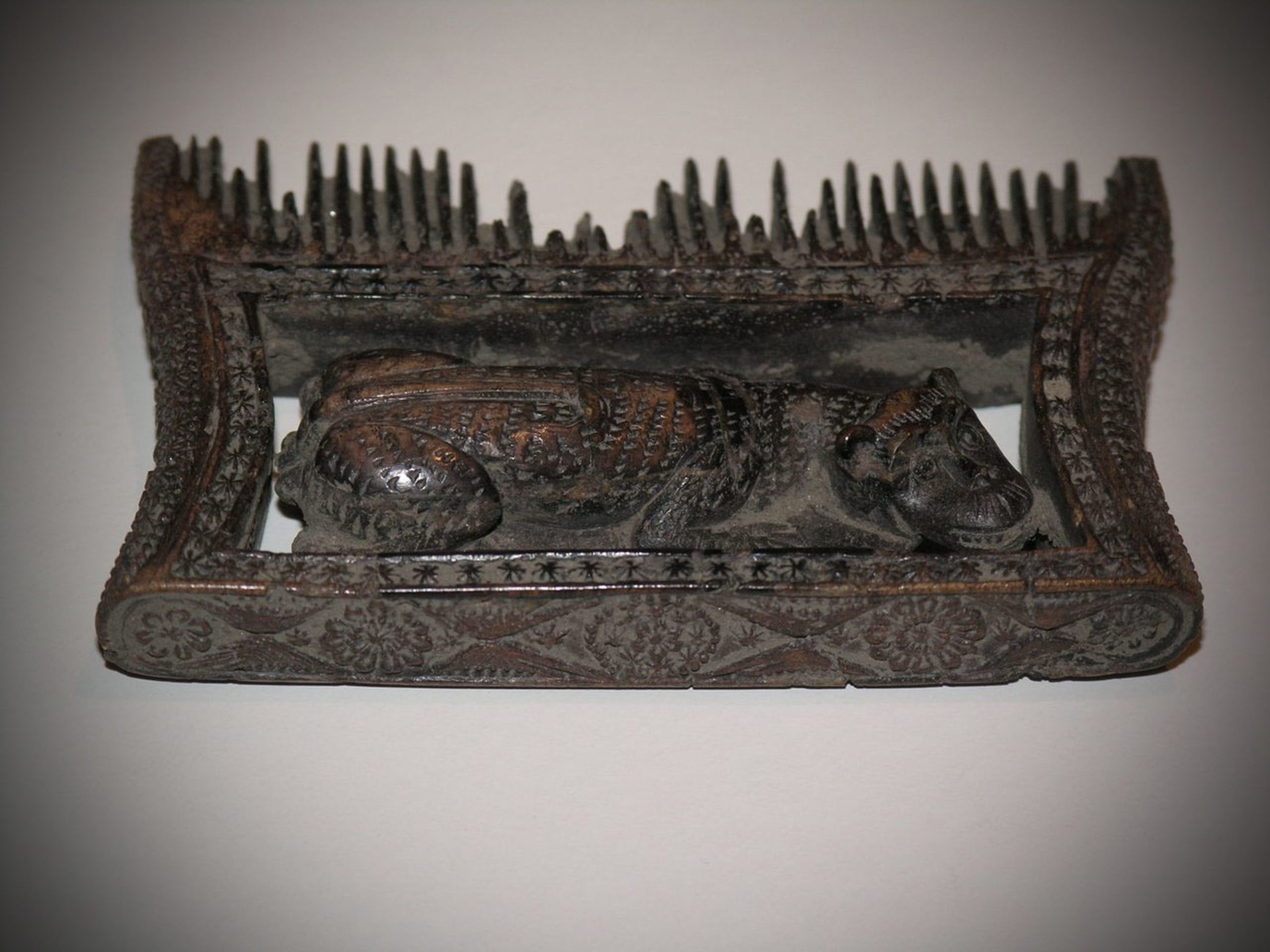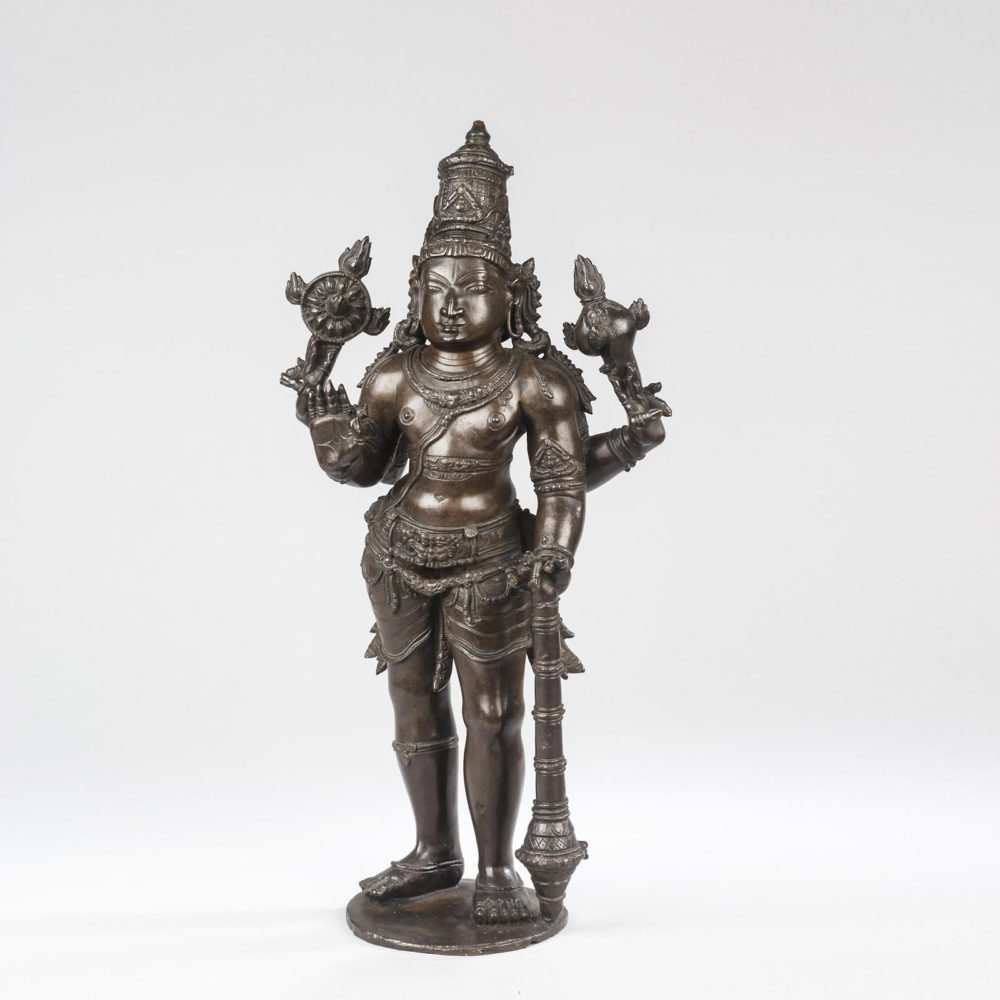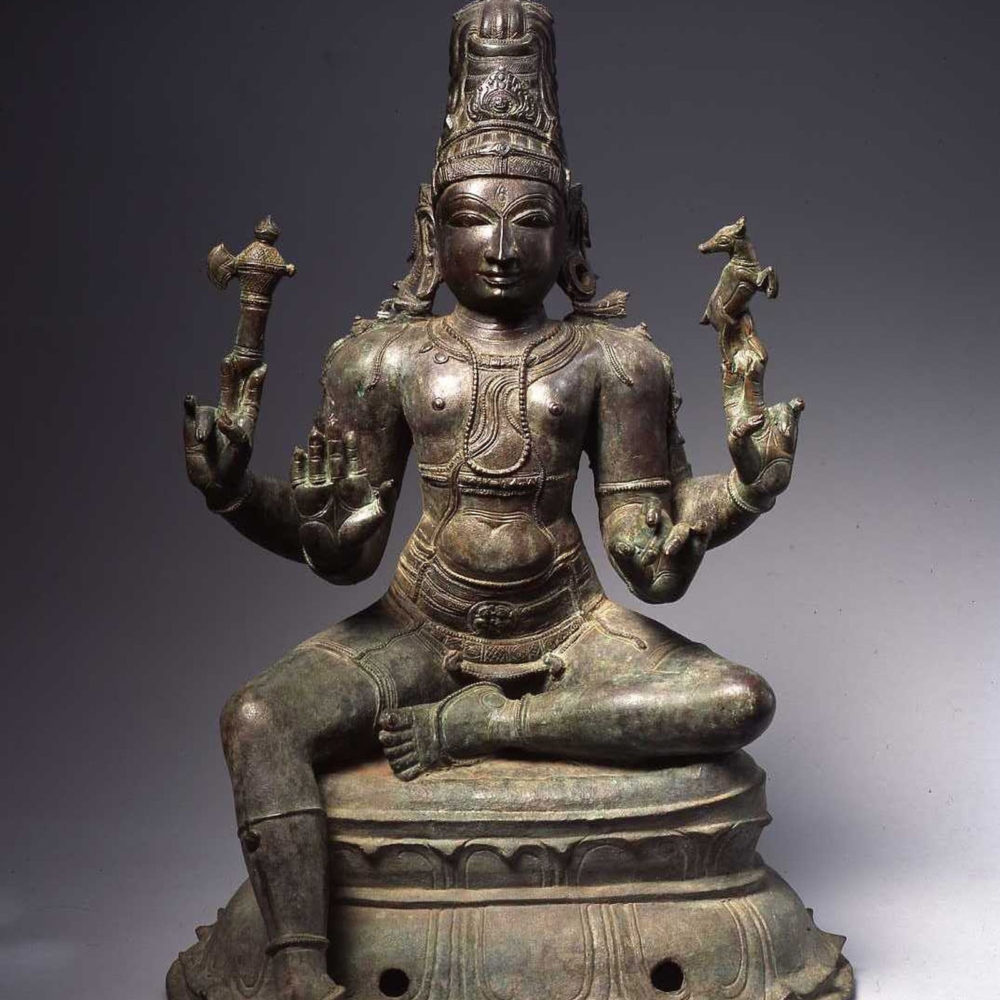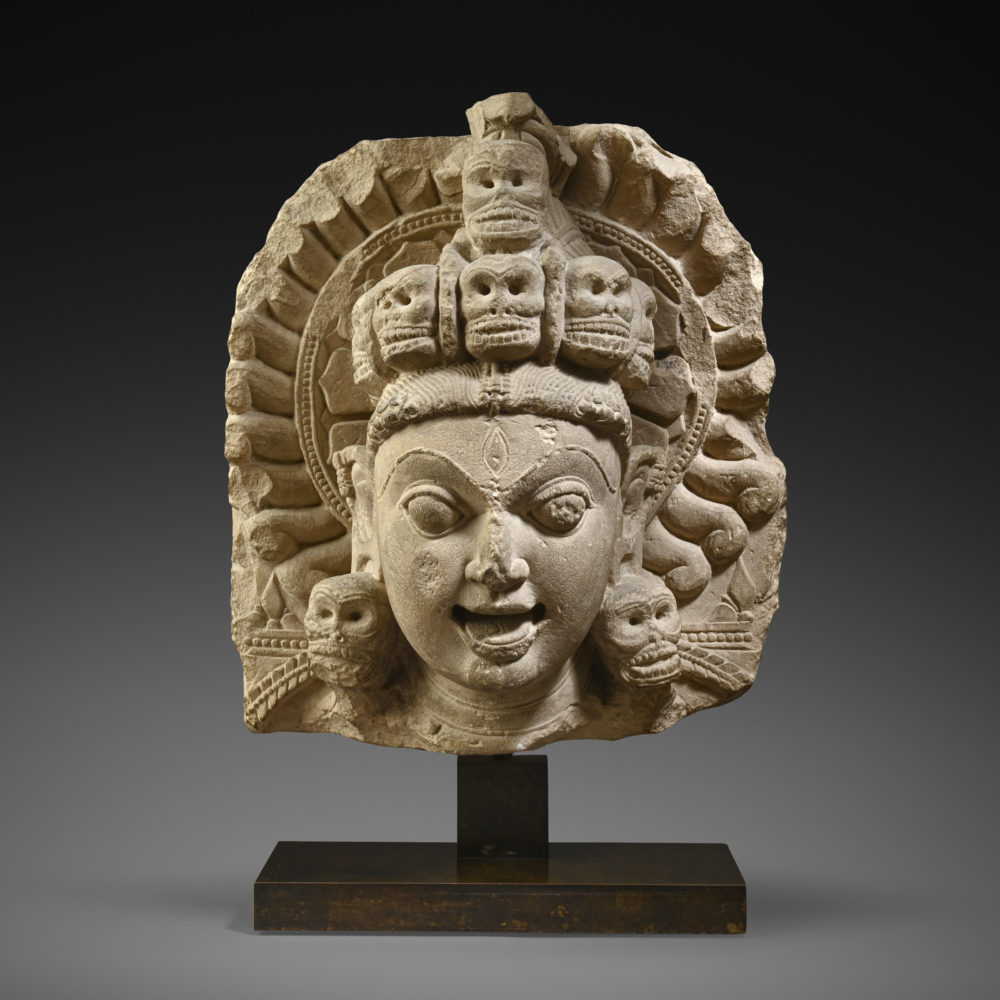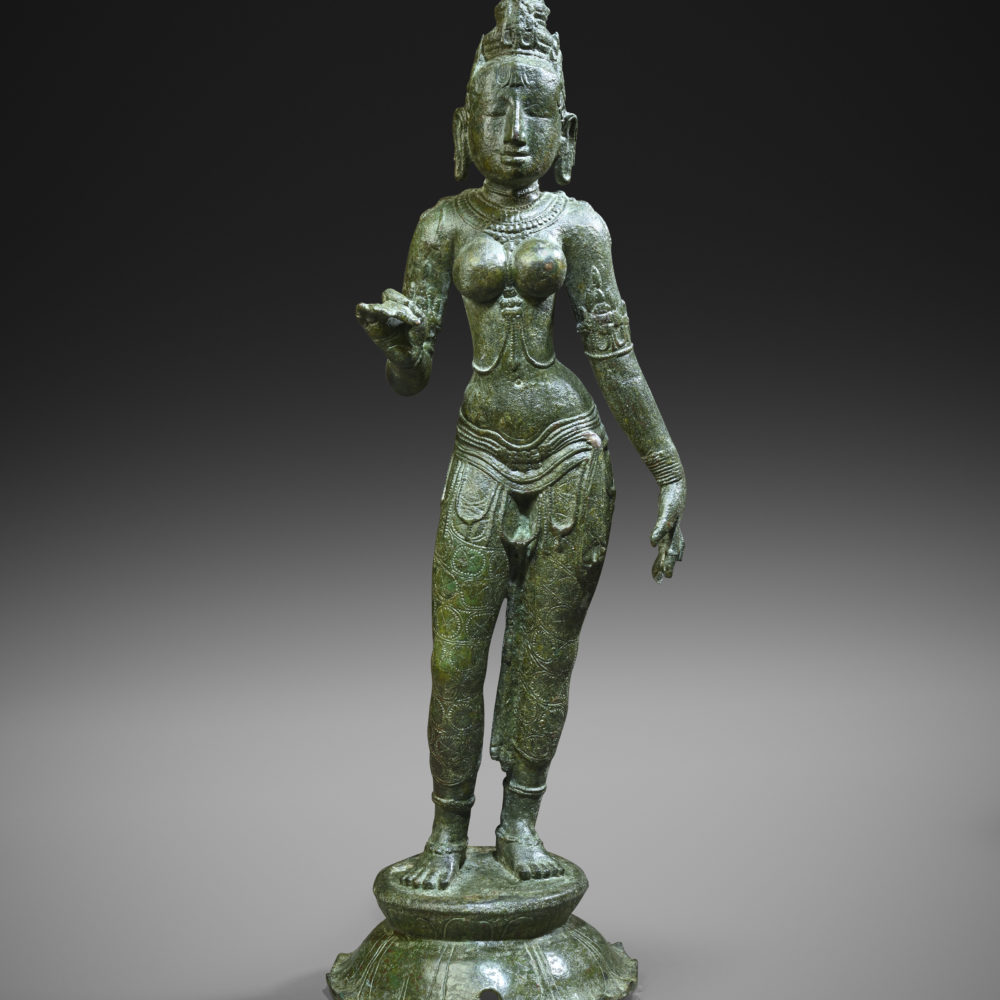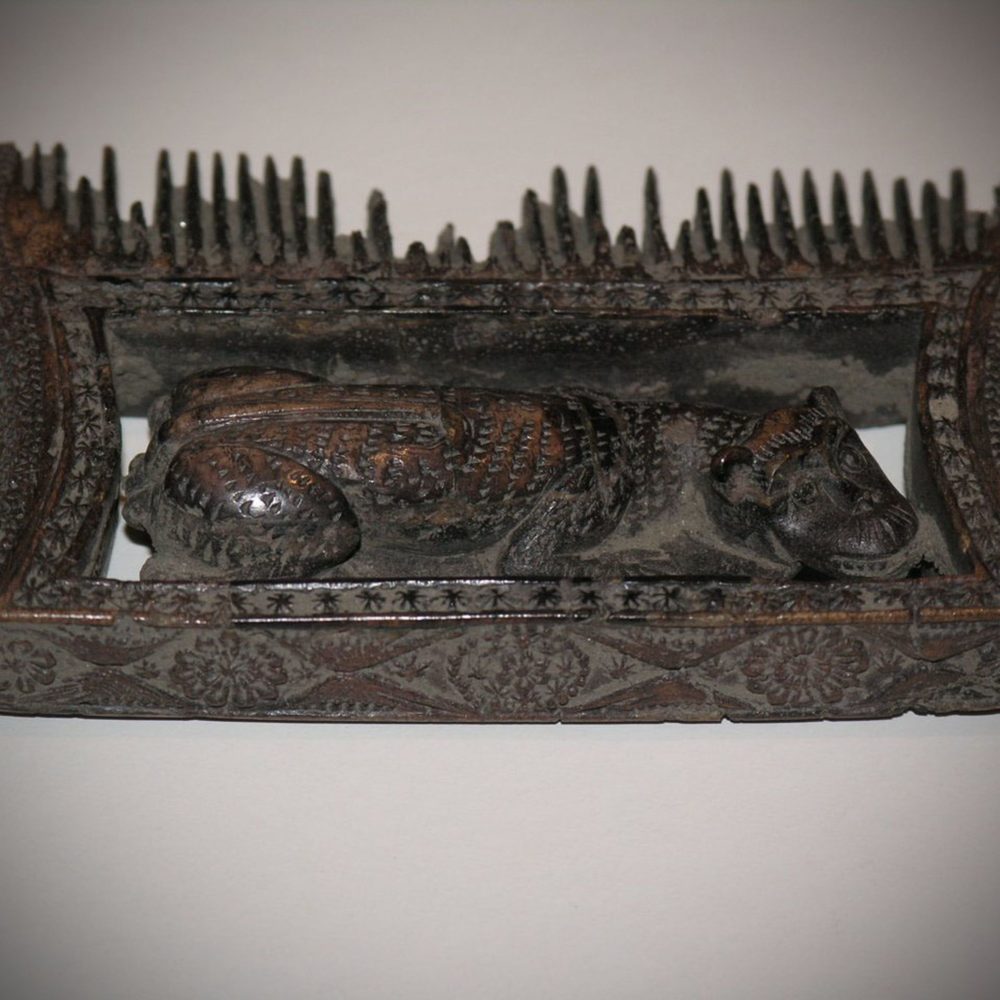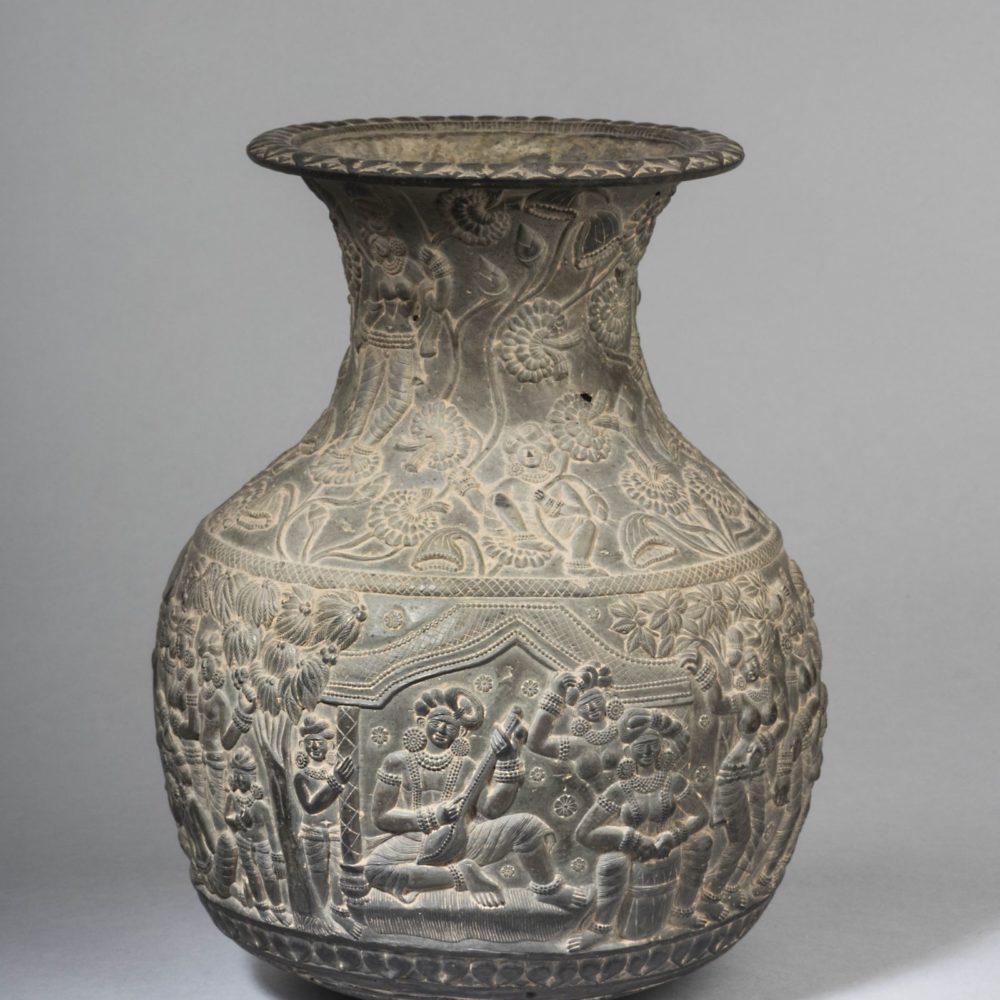A carved ivory comb
Shunga period, circa 100 BC, Chandraketungarh, India
Length: 6 cm, 2.4 inches
The Sunga (or Shunga) empire was a royal dynasty that controlled much of the eastern part of the Indian sub-continent from around 185 BC to 73 BC. Hinduism was the state religion. Education and the arts flowered during the period. Terracotta images, larger stone sculptures and various important architectural monuments survive as testaments to this.
This comb depicts a fertility symbol, where the Tiger God copulates with a woman. The tiger is also possibly depicted as a vehicle for Amba goddess.
Similar Examples
“The Art and Architecture of India” Benjamin Rowland, 1967, fig. 107.


